4
Bannock & Fire
Reconciliation Teachings Come Out of the Classroom

PAGE 8
TURNING WORDS INTO ACTION
Focus of PCBA implementation is ensuring change.
PAGE 1 4
ALL KINDS OF MINDS
Embracing neurodiversity: affirming practices to suppor t students.
PAGE 32
LABOUR SCHOOL
Growing teacher advocates, solidarity and labour knowledge.
18
FALL 2025 | VOLUME 92, NO.1
ISSN 2816-3885 (Print) ISSN 2816-3893 (Digital)
The Saskatchewan Teachers’ Federation Bulletin is published four times during the school year and is distributed both electronically and in print.
Have a story idea or a topic you would like us to include? We’d love to hear from you. Reach us at stfcommunications@stf.sk.ca
For our current advertising rate card or to book an advertisement, please contact stfcommunications@stf.sk.ca
Editor: Courtney Forseth, Managing Director of Communications and Public Relations
www.stf.sk.ca INSTAGRAMFACEBOOK YOUTUBE LINKEDIN-IN @SaskTeachersFed
©2025. For permission to reprint, please contact the editorial office. Indexed in the Canadian Education Index ISSN 0036‑4886
of the

As teachers welcome students to their classrooms, I get the privilege of welcoming teachers. To those starting out in the profession this year, you are embarking upon a challenging and rewarding profession. Please take advantage of all the services that your Federation provides, and do not hesitate to connect with us for support as you navigate your first year. To those returning after the break, welcome back! I am so proud to stand next to you as we continue to advocate for the highest quality public education for Saskatchewan’s students, characterized by adequate funding and all necessary supports. I hope every teacher across Saskatchewan had time to rest and rejuvenate this summer. I know that for many, the summer months meant contending with the aftermath of wildfires and evacuations. Our thoughts are with you, and your Federation is here to offer support as needed, as you return to your schools.

The feeling of excitement and possibility that comes with the start of a new school year is something every teacher, student and parent can relate to. This fall, especially, will be a season of change and new beginnings for our sector. As the leaves turn yellow, the days shorten and the weather cools, the public education sector in Saskatchewan will be seeing the implementation of several hard won changes that have been a decade in the making. Funds to begin addressing classroom complexity and hiring more teachers mark historic gains in our bargaining efforts, and this year we will see them in action thanks to the incredible efforts and solidarity of our membership. Of course, this is just a start on the road to course correct after years of underfunding.
Preparations are well underway as we head into the next round of provincial collective bargaining later this spring. Heading into the next round, we will be carrying forward an incredible wave of momentum and solidarity, thanks to the engagement and commitment of our members. As part of the lead up to those efforts, and as we strive to engage members in both local and provincial matters, the Saskatchewan Teachers’ Federation held our first ever Labour School in August. This initiative is focused on teacher led advocacy, labour organizing, governance and more. I want to thank the organizers and presenters for putting on what were very informative and inspiring sessions. I want to thank all our members who took time out of their summer to engage in this opportunity to learn and strengthen our Federation. The goal of Labour School is to educate and create interest for members to get involved at the local and provincial levels of our Federation and to build upon the unity we have already seen across our membership.
Teachers, your wellness is critical. No one can pour from an empty cup. While there is so much to look forward to, we have all been through so much over the past several years. I encourage you to lean on your colleagues, access the supports available through the STF and prioritize your own well being whenever possible. Your health –both mental and physical – is vital to the strength of our profession.
Samantha Becotte Saskatchewan Teachers’ Federation President



BY: SARAH MACDONALD, STF COMMUNICATIONS
Taking Reconciliation Out of the Classroom It’s
not every day that Grade 3 and 4 students get to play with hatchets and fire in the schoolyard. Then again, it’s not every day that they get to learn Indigenous teachings from the land. But if it were up to Laurie Sneddon, a Grade 4 teacher at Battleford Central School, it would happen a lot more often.
Sneddon, who has been teaching since 2000, has been integrating more and more First Nations and Métis content into her classes. When she started her career, there were very few Indigenous resources, and the curricula glossed over Indigenous perspectives. But as Canadians address the dark history of colonization and residential schools, there has been a noticeable shift. Now children are learning about Indigenous people in their classes, and if they’re lucky, like those at Battleford Central School, in the schoolyard, too.
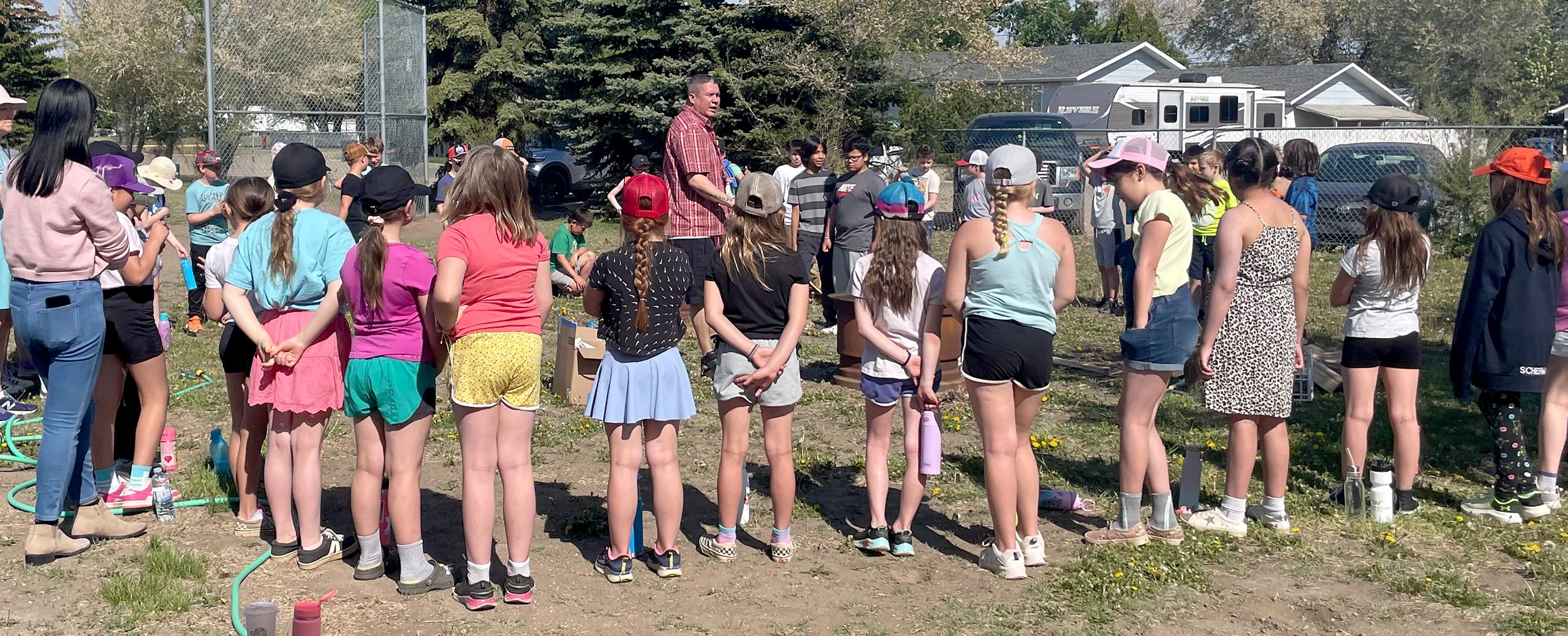
“I think that learning from the land and having fun doing it is part of understanding different cultures and that’s part of what we want to do for reconciliation in an elementary setting,” Sneddon explains.
For Sneddon, incorporating Indigenous ways of knowing and doing into her teaching is also part of a more personal journey. Her mother’s family is Métis from Red River and Turtle Mountain, but due to discrimination, her grandmother was raised to say she was Spanish and was not taught any culture or history. Recently, Sneddon, her siblings and her mother began exploring their Métis roots, taking pride in what was once considered shameful. “The more I discover, the more I can share with my students,” Sneddon says.
Now she teaches her students how to bead and do Métis finger weaving and takes them to powwows. Two years ago, she introduced Bannock Day to the school, which has approximately 35 percent of its students self identifying as Indigenous. This year she expanded it to be the Bannock and Fire Teachings Day and invited Anishinaabe
Knowledge Keeper Barry Shingoose, a member of Cote First Nation in Treaty 4 Territory, to lead the teachings.
The Grade 3 and 4 classes spent a day last May learning to make a fire while listening to Shingoose share First Nations teachings about fire. Then, with the help of Sherron Burns, the Indigenous education consultant for Living Sky School Division, they made chokecherry jam and bannock over the fire.
Shingoose is a former middle school teacher who now has a consulting company, Indigi Nist Consulting, through which he shares Indigenous perspectives of science, math and astronomy, which are embedded in First Nations cultures. He learned his teachings from his grandfather and from other Elders and Knowledge Keepers in Saskatchewan. His work has taken him to 58 of the 74 First Nations in the province. “I get an opportunity to sit with Elders and Knowledge Keepers and learn stories from their perspectives or their community. I hold a lot of knowledge to my heart,” Shingoose says.
Shingoose showed the students each step of making a fire, from finding a good place to build it, to gathering tinder, cutting kindling and logs with a hatchet, and lighting it with a steel and flint. As he demonstrated the steps, he spoke of how some First Nations people compare a fire to one’s life. Where you build your

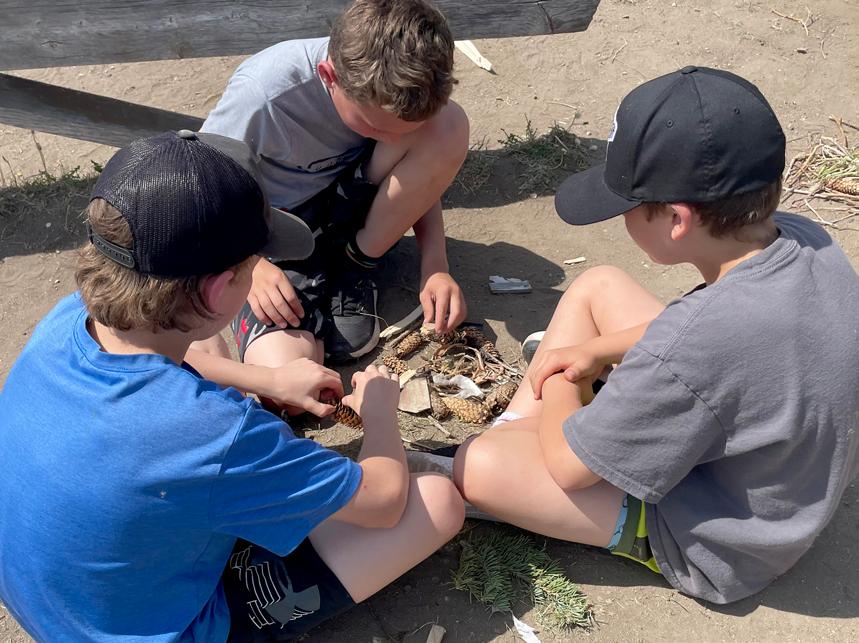


fire is like the foundations of life. The tinder is symbolic of the values one learns as a child. The kindling represents one’s teenage years. The logs are adulthood. Each stage impacts the next.
“It’s really interactive and fun for them because they’re just sitting there listening and watching me actually build a fire. Then I tell them, just like in life, if you have everything built right, what will happen to the fire? If you were raised with good values, if you live a good life, then your life is going to be lit up like a fire. That’s what they call our home fire,” he explains.
it to the Seven Sisters (Pleiades) constellation, because that’s representative of fire, too, or representative of the Seven Grandfathers, the rocks used in a sweat lodge,” he says. The Anishinaabe call the seven stars Madoo’asinug, or “Sweating Stones.”
Shingoose went to elementary school in Yorkton in the 1990s and he was one of two Indigenous children in his class. Racism, stereotyping and discrimination were prevalent. He has noticed a shift as he visits schools around the province. Now the Indigenous children take pride in the teachings and the ceremonies.
“... learning from the land and having fun doing it is part of understanding different cultures and that’s part of what we want to do for reconciliation in an elementary setting.”
Shingoose also shares how First Nations people view fire as an element, a spirit and a helpful gift from the Creator. He speaks of the strong connection between women and fire in Cree culture; the Cree word for fire, iskotew, is derived from the word for woman, iskwew.
Another teaching related to making a fire is one about teamwork. First Nations people were traditionally very cooperative and worked together in their communities. Battleford Central School students who didn’t always get along well were put in the same group and had to figure out how to communicate and collaborate to build their fires.
Astronomy also features in Shingoose’s Fire Teachings. “I link
For the Battleford Central School students who participated in the Bannock and Fire Teachings Day, the lessons will be lasting. Mallory Hellofs, a Grade 4 student, says the day made her really think about Indigenous Peoples’ ways of life and beliefs. She is also grateful for the practical skills she learned and thinks she will be able to share them with her family.
“It was really cool because [Mr. Shingoose] would, like, really share everything. He wouldn’t leave a detail out,” she says.
Sneddon encourages teachers to try more hands on activities to integrate Indigenous knowledge into their classes, whether they’re Indigenous or not. She says they can start out small,



be open to learning, and reach out to Indigenous people like Shingoose to help them. She says there are many ways that the teachings can fit into Western curricula, too. The Bannock and Fire Teachings Day touched on health, social studies, math and English language arts, as the students had to write little poems summarizing the day.
Sneddon, who grew up on a farm north of the Battlefords, has also seen more acceptance and even celebration of Indigenous culture in Saskatchewan. From learning to deny her Indigenous roots as a child, to starting her Bannock and Fire Teachings Day with a tobacco offering and a smudge, she is happy that children get to participate in reconciliation firsthand by learning Indigenous ways of knowing and doing.
“Our children all know the story for Orange Shirt Day and residential schools. We’ve worked very hard on making sure they understand that. We’ve done amazing art installations based around it. We’ve read the stories, and we’ve had the discussions. But I think this added to the idea that reconciliation isn’t just that day; it’s a much bigger idea,” Sneddon says
Fire Teachings Activity Recipes
BANNOCK
From: www.bakersbeans.ca/bannock stick brewers campground gull lake/#recipe
Ingredients
2 c flour
4 tsp baking powder
4 tbsp cold butter
2 tsp white sugar
Instructions
1. In a resealable plastic bag, combine flour, baking powder, butter, sugar and salt. Seal and squish the bag until the butter is crumbly. Write on bag “Add 1/2 cup water.” Put in refrigerator or cooler.
2. At your campsite, prepare yourself a roasting stick. Set aside.
3. When ready to make the bannock, add water to bag, seal and squish until mixture starts to form a dough ball. Remove from bag and put on a cutting board; form into 4 6 balls.
4. Roll each ball into a long log and wrap around ends of roasting stick. Roast over hot fire, but not too close as to burn the outside. This part takes time since you want to cook the inside without burning the outside. Turn slowly; it will take anywhere from 10 to 20 minutes.
5. When the bread is brown on the outside, it has puffed up a little and feels cooked on the inside, it is ready.
SIMPLE SYRUP/FRUIT SPREAD
From: Sherron Burns
“I don’t have a recipe as I like to taste and see. For the chokecherry syrup I keep it simple: wash them and pick out leaves and spiders lol. Put into a pot and add just a little water, to barely cover the fruit. Stir over a low boil and add sugar to taste maybe a cup of sugar for three cups of berries. You have to taste to see. I also like to add a cinnamon stick. Stir till the berries soften and the pits are coming loose. The liquid should be thickening; I think about 20 minutes. (I watch it; I don’t time it.) Once it seems ready, you use a cone shaped strainer with a pestle to strain the juice from the pits. Then cook it longer to thicken; may need to add more sugar. This makes syrup and can be enjoyed right away or canned for long term.”

Turning Words Into Action
2023-2026 Provincial Collective Bargaining Agreement Implementation
BY: LANCE HILTZ, STF COMMUNICATIONS
Implementation of the 2023-2026 Provincial Collective Bargaining Agreement has been keeping the education sector busy for the past several months. The Agreement is a major milestone for teachers and public education after a contentious round of negotiations that saw the longest stretch of job action ever by Saskatchewan’s teachers. Signed by the Teachers’ Bargaining Committee and Government Trustee Bargaining Committee last spring, after an arbitrator decided in favour of teachers’ position on including provisions to address classroom complexity, the Agreement includes several new provisions that directly address classroom complexity. Most notably, approximately 515 permanent new teaching positions will be added to schools across the province, and an additional $20 million per year in new funding is earmarked to address classroom complexity.
“The last round ended well for us, with finally getting classroom complexity into the Agreement. That’s a battle that we don’t have to fight going forward,” says STF Associate Executive Director, Labour Relations Patrick Maze. “Now we can focus on implementation to ensure the changes are having the intended effect. Knowing we are back at the bargaining table in May of 2026, we will be gathering feedback from members to see what is working and what requires further changes.”
Over the last decade, classroom complexity has intensified in Saskatchewan schools as a direct result of increased needs among the growing student body and the provincial government’s underfunding of the public system. With the implementation of the Agreement, every school with a student population over 150 gets a full time certified teacher, and every school with a population of 75 149 students gets a half time teacher, assigned to address classroom complexity. The duties of these teachers “may include, but are not limited to, one on one behavioural/safety interventions, individual or small group programming to address specialized learning
needs of students, acute learning needs, modifications or adaptations of programming, counselling services, self regulation education” and more, as per article 17.3.1 of the 2023-2026 PCBA
“Having a dedicated, go to person in the school who does not have a classroom assignment and can be relied on to intervene and assist students with complex needs should
“Now we can focus on implementation to ensure the changes are having the intended effect. Knowing we are back at the bargaining table in May of 2026, we will be gathering feedback from members to see what is working and what requires further changes.”
make the learning environment better for teachers and students alike. We will be able to begin addressing some of the problems that we have heard about for years and long advocated solutions to,” says STF Executive Director Angela Banda. “We know that we are facing a teacher recruitment and retention issue in Saskatchewan and it may be challenging in some locations but the expectation is that school divisions must do their very best to fill these

positions,” says Banda. “If divisions have issues hiring, there is a measure in the Agreement that allows them to hire other professional classroom supports for this fall.” This measure is intended to help with implementation in the near term, and the STF will be closely monitoring how and where this is used. Despite the GTBC’s insistence during bargaining that there is no teacher shortage, concerns about teacher recruitment and retention were part of the TBC’s original proposal package from the onset of the last round of bargaining.
For the Teachers’ Bargaining Committee, one concern regarding implementation that has already surfaced is the funding for government’s Specialized Support Classroom pilot project. Government announced this project during the bargaining round, which the TBC believes was an attempt to subvert teachers’ efforts to get classroom complexity into the collective agreement. The Ministry has indicated that the PCBA is fully funded, yet the Special Support Classroom project funds allocated to school divisions do not include full funding. The government has suggested that an SSC teacher can be one and the same as the class complexity teacher in a school. “For the government to say that their specialized support classroom teachers will be considered the classroom complexity teachers for the schools involved in their pilot program is wrong and not in the spirit of the Agreement,” says Banda. “We have communicated this to government, and we are looking at various ways to challenge it in instances where they are not in fact properly funding their specialized support teachers.” Regardless, the STF recognizes that any additional funding to support teaching and learning is valuable. Addressing the issue of classroom
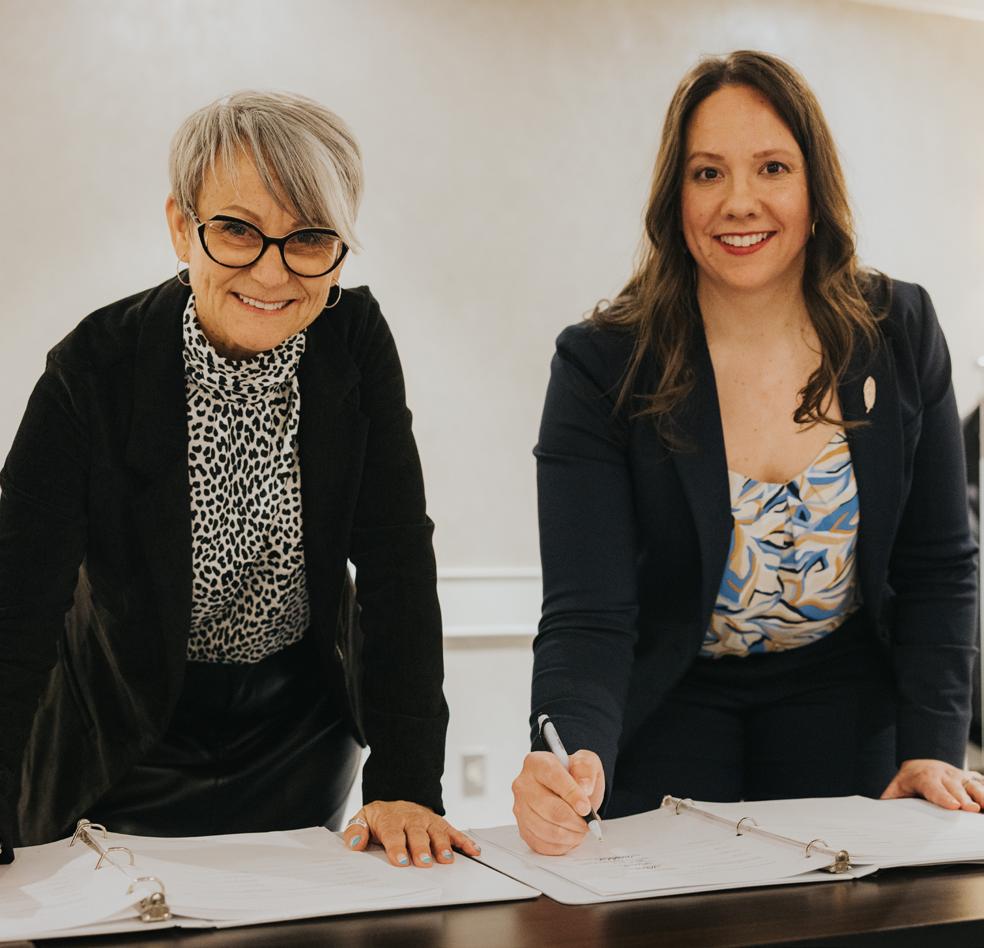
complexity needs to take a variety of forms and the STF is confident that school divisions will implement both initiatives in accordance with what is best for students and teachers.
According to The Education Act, 1995, teachers are expected to be back at the bargaining table in May of this upcoming school year. For the STF, there is an ongoing, continuous cycle of work related to bargaining: organization and preparation, negotiations, implementation and evaluation. The Federation is always engaged in some part of the cycle, whether it is a bargaining year or not. The STF Executive appoints members of the Teachers’ Bargaining Committee annually, during their August meeting. This year’s new TBC members will quickly join in. Preparations are already well underway and will continue. This includes appointment of the new TBC, collecting member feedback, developing strategies, and assembling a proposal package for STF councillors to vote on during their Annual Meeting of Council in spring 2026.

Reducing the Impact of the $10 Drug Deductible
BY: SARAH MACDONALD, STF COMMUNICATIONS
To help manage the growing cost of prescription drugs in the Members’ Health Plan, a $10 drug deductible was introduced on July 1, 2025. Following the Pension and Benefits Board of Directors’ recent review of the Plan’s benefits, design and funding, the Board has determined that introducing a $10 deductible is the most equitable option to help ensure the Plan’s short-term stability. This change means that for each prescription fill, members will pay the first $10 before their drug coverage begins. While this is a new cost, there are ways to reduce the impact.
When you are prescribed a new medication, your first fill is limited to a 30 day supply. This gives you and your care provider time to see how well it works and ensure it is right for you. Once your condition stabilizes and the medication is considered appropriate for long term use, it may qualify for a 90 day refill.
By requesting a 90 day refill, you’ll only pay the $10 deductible once every three months instead of three times for three separate monthly refills.

WHAT MAINTENANCE DRUGS CAN BE PROVIDED IN 90-DAY SUPPLIES?
Medications that are taken long term to manage chronic conditions often referred to as maintenance drugs may be eligible for 90 day refills. Eligibility depends on the medication, how long you have been taking it and whether your condition is considered stable.
supplied per refill due to inventory, co pay structures or corporate practices.
It is important to speak directly with your pharmacist. Ask whether your maintenance drugs are eligible for 90 day refills and whether your pharmacy can accommodate your request.
COORDINATION OF BENEFITS

Medications prescribed for short term use, or those with higher restrictions, such as controlled substances or trial drugs, are typically not eligible for extended refills.
By requesting a 90-day refill, you’ll only pay the $10 deductable once every three months instead of three times for three separate monthly refills.
NOT ALL PHARMACIES ARE THE SAME
Even though plans allow for 90 day refills, pharmacies may follow their own internal policies. Some limit the days
If you have access to additional health coverage through a spouse or partner, ask your pharmacist about coordinating benefits. You may be able to submit through both plans to reduce or eliminate the out of pocket portion, including the deductible. Keep in mind that other plans may also have their own deductibles or co pay rules.
TRAVELLING
If you are travelling for an extended period, ask your pharmacist about early refills or travel supplies. In many cases, you can request larger quantities with proof of travel and you only need to pay the deductible once.
Our team at the Members’ Health Plan is ready to answer any questions about the deductible or any other questions you may have. You can reach them at 306 373 1660, 1 800 667 7762 or health@stf.sk.ca
CERTIFICATE IN INCLUSIVE EDUCATION

This program meets the Saskatchewan Ministry of Education requirements for an Additional Qualification Certificate (AQC) for


Resources for Beginning Teachers
BY: JOAN ELLIOTT, ESRC LIBRARIAN AND MANAGER
Did you know the STF has a library to serve members? The Emma Stewart Resources Centre has a diverse array of teaching resources that can be sent right to your school or home with all postage paid by us. Contact us at esrc@stf.sk.ca or request materials directly from the Online Catalogue.



Does My Teacher Notice Me? Transformative Practices That Affirm and Accelerate All Learners
This thoughtful book by Tyler Gilbert describes inspirational approaches for assisting teachers to truly see and understand each child in the classroom, while also supporting formative assessment, scaffolding and feedback.
The First Five: A Love Letter to Teachers
This memoir by Patrick Harris II highlights the lessons he learned about the realities of teaching in his first five years. Questions and exercises to help teachers reflect on their journey are interspersed throughout the book.
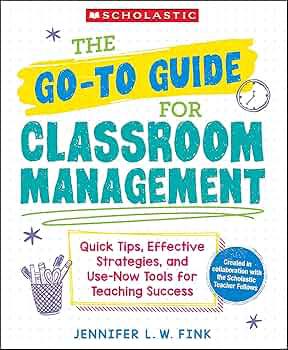
The Go-To Guide for Classroom Management: Quick Tips, Effective Strategies, and Use-Now Tools for Teaching Success
Learn how to establish effective daily routines and norms, organize time and materials, and build relationships by delving into this practical and user friendly guide by Jennifer L. W. Fink. Planning and reflection templates and checklists are included.

Little Guide for Teachers: Healthy Habits for Teacher Life
Featured in this little guide for teachers by Charlie Burley are numerous suggestions for building healthy habits that last, managing mental health, eating well, using movement to foster wellness, and planning for rest and relaxation.
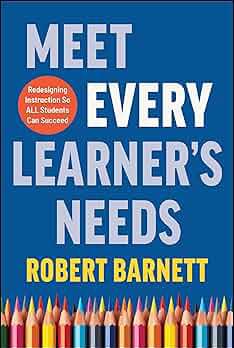
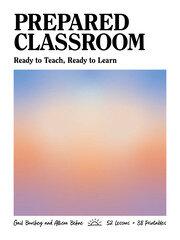

Meet Every Learner’s Needs: Redesigning Instruction So All Students Can Succeed
Discover the steps you can take to keep all students challenged and supported in this engaging resource written by Robert Barnett. Numerous suggestions for redesigning lessons, instruction and courses are presented.

Prepared Classroom: Ready to Teach, Ready to Learn
Explore the wealth of evidence based strategies for dealing with relationships, classroom environment, daily routines, independent and collaborative learning, conferring, lesson planning and progress monitoring presented by Gail Boushey and Allison Behne in this thoughtful resource. Templates for using with students are also included.

Tools Not Rules®: Developing Self-Regulation for Improved Student Behavior in Grades K-8
Authors Claudia Bertolone Smith and Marlene Moyer focus on a method that encourages students to monitor, understand and improve their behaviors. Discover their strategies on how to foster healthy mindsets, accountability, empathy and self assessment in this resource aimed at creating a welcoming classroom environment.
When You’re the New Teacher: 28 Strategies to Align Your Good Intentions With Your Teaching Practices
Ideas for school year preparation, building relationships with families and colleagues, affirming student identity and belonging, dealing with challenges and sustaining joy are presented in this insightful resource by Elizabeth Soslau. Tools for communicating with families and discovering students’ goals and strengths are also included.

All Kinds of Minds: Embracing Neurodiversity in Today’s Classrooms
BY: DENISE HEPPNER, ASSOCIATE DIRECTOR, STF PROFESSIONAL LEARNING
Teachers in Saskatchewan and beyond are increasingly navigating classrooms that reflect a wide range of neurodiverse needs. From sensory sensitivities and communication differences to regulation challenges and unique learning profiles, the landscape of today’s classrooms is more complex than ever.
At the heart of inclusive education is the belief that all students deserve to feel seen, valued and supported for who they are. This includes neurodivergent learners –students whose brains are wired a little differently, whether they are autistic, have ADHD, experience anxiety or process information in ways that may not align with traditional expectations. These students don’t need to be “fixed” or “managed” – they need to be understood, accepted and affirmed.
Why Neurodiversity-Affirming Practices Matter
Neurodiversity affirming practices are rooted in the idea that neurological differences are part of human diversity. They challenge deficit based thinking and instead promote environments where all kinds of minds can thrive. When educators shift from asking, “How do I fix this behaviour?” to “What is this student trying to communicate?” the focus becomes one of connection.
Neurodiversity affirming classrooms benefit all students – not just those who are neurodivergent. When we build routines that support regulation, when we offer multiple ways to communicate and engage and when we reduce sensory and emotional overwhelm, we create a learning environment that is more inclusive, more respectful and more effective for everyone.
Neurodiversity-affirming practice isn’t about adding something extra to your already full plate – it’s about shifting how we see and support students.
These approaches also support teacher well being. Classrooms built on safety, trust and flexibility tend to experience fewer behaviour escalations and more meaningful relationships. Teachers feel more empowered, and students feel more understood.
What This Looks Like in Practice
Neurodiversity affirming practice isn’t about adding something extra to your already full plate – it’s about shifting how we see and support students. It means:
• Designing classrooms that allow for movement, sensory tools and flexible seating.
• Offering communication choices like visuals, gestures or assistive technology.
• Building routines that support predictability and reduce anxiety.
• Using language that reflects respect and avoids labeling students by their challenges.
• Responding to behaviour as communication.
It also means collaborating with families and caregivers (who know their children best) and listening to neurodivergent voices to guide practice. More and more, neurodivergent adults are sharing what helped – and what harmed – their school experiences. Their insights are critical to shaping more compassionate classrooms moving forward.
Continuing the Learning Journey
Understanding and supporting neurodivergent students is not a destination – it’s an ongoing learning journey. To support this work, the Saskatchewan Teachers’ Federation Professional Learning team has developed two in person workshops for PreK to Grade 8 teachers and educational assistants. These sessions offer practical strategies, current research and real world examples to help teachers deepen their understanding and apply neuro affirming approaches in their classrooms.
• Understanding Neurodivergence: Insights Into Autism and Behaviour
Developed in partnership with Autism Services, this session offers foundational learning about autism and other forms of neurodivergence, alongside practical strategies for inclusive classroom practice.
• Supporting Neurodiverse Minds in Learning Environments
Focused on regulation, communication and building inclusive routines, this session explores how to respond to student needs while maintaining educator well being.
Creating classrooms that affirm and support all kinds of minds requires curiosity, compassion and the willingness to adapt. When teachers lead with those qualities, the result is a classroom where all students feel like they belong –and where every learner, neurodivergent or not, has the chance to succeed.
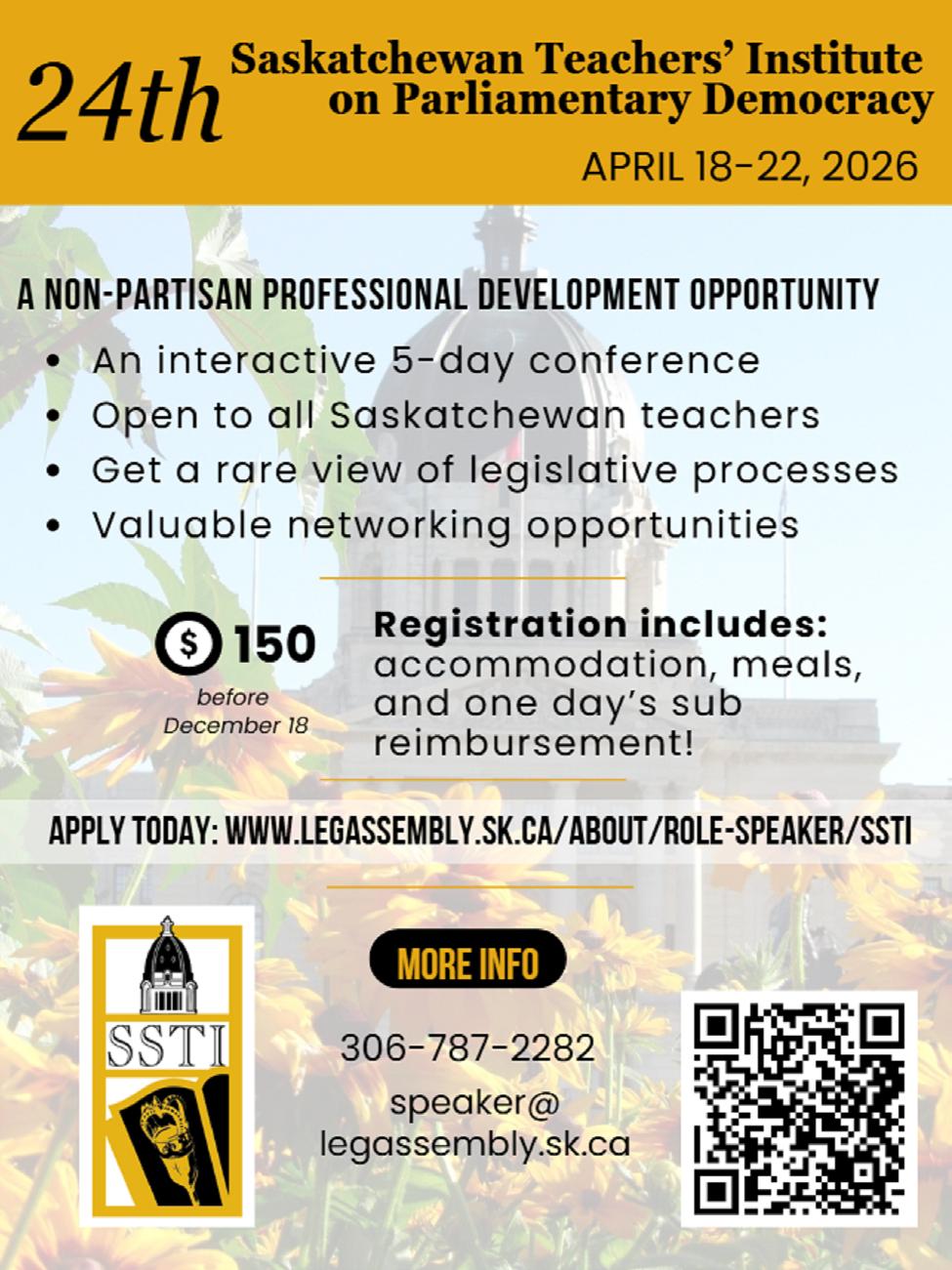
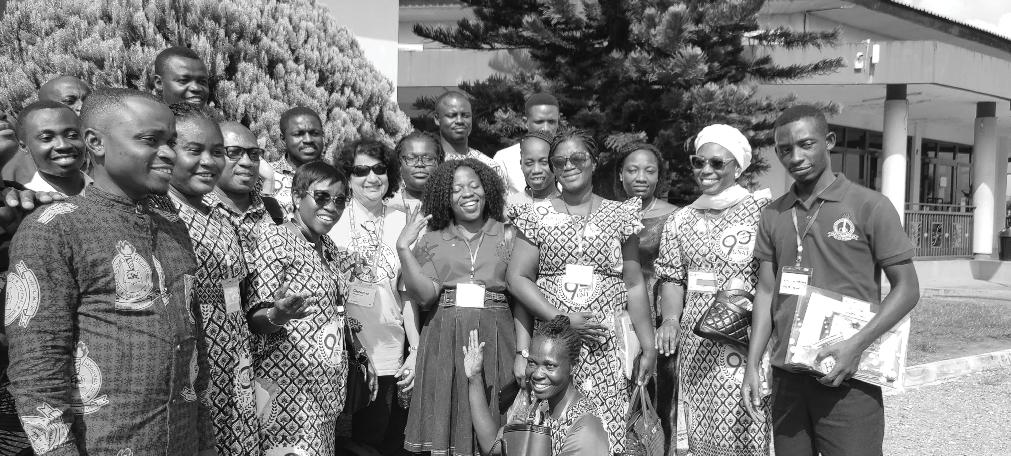
If yes, Teaching Together might be for you!
APPLICATION DEADLINE
Monday, November 3, 2025
INTERVIEWS
Monday, November 24, 2025

Setting the Right Tone for the New School Year

BY: NATALIE MITCHELL, VICE PRINCIPAL, ST. NICHOLAS SCHOOL, REGINA
The beginning of a school year is always an exciting time – whether you’re new to principalship or have years of experience. It’s a season full of fresh starts, renewed energy and meaningful opportunities. It’s also a natural time for reflection and goal setting.
As I begin my fifth year as a vice principal, I’ve come to appreciate how much growth comes through lived experience, mentorship and the daily work of leading a school community. Here are a few lessons that have shaped my journey.
BUILD RELATIONSHIPS
Start by building strong relationships – with staff, students, families and community partners. People want to know you care before they care what you know. Being present, approachable and genuinely interested in others’ experiences lays the groundwork for meaningful connection.
Prioritizing relationships fosters trust and builds a positive, supportive school culture. When we take the time to listen, connect and show appreciation, we create an environment where people feel seen, heard and valued – and where they can truly thrive. Strong relationships form the foundation of your educational team. They allow for open, honest and transparent communication – essential elements of effective leadership. Relationships are not just important – they are essential. They are the starting point for everything that makes a school community strong, compassionate and successful.
BE PRESENT
The beginning of the school year is an incredibly busy time for all administrators. Despite the fast pace, visibility matters – your presence sets the tone for the school. Being present means more than just being available. It

Being present ... means actively engaging in the life of the school: walking the hallways, visiting classrooms, supervising the playground and greeting students – ideally by name – as they arrive each day.

means actively engaging in the life of the school: walking the hallways, visiting classrooms, supervising the playground and greeting students – ideally by name – as they arrive each day. These simple but intentional actions go a long way in creating a positive, caring and connected school culture.
Your visibility sends a clear message to staff, students and families: you care, you’re invested and you’re here to support them. It reinforces that you’re not just managing from the office – you’re part of the team, working alongside teachers to establish consistent routines, uphold expectations and help build a strong foundation for a successful school year. Being present isn’t just about leadership – it’s about partnership.
BE CURIOUS
Be curious and never stop learning. Ask questions, seek out feedback,
and stay open to new ideas. Connect with other principals don’t hesitate to ask for help or advice. Remember, you don’t know what you don’t know and that’s perfectly okay.
Leadership is a continuous learning journey. The most effective principals are those who stay reflective, embrace growth, and are always looking for better ways to support their staff and students. Stay curious, stay humble and keep learning.
JOIN THE SSBL
Join the Saskatchewan School Based Leaders and get involved!
As a member of the SSBL, you are automatically part of the Canadian Association of Principals – connecting you to a national network of educational leaders. These professional associations offer a wide range of opportunities
for professional growth, networking and leadership development. From conferences and workshops to mentorship and advocacy, there are countless ways to expand your knowledge and impact as a school leader.
Excitingly, Regina will be hosting CAP 2026 from May 5 to 8, 2026! This is a fantastic opportunity to engage with administrators from across the country, right here at home.
Invest in your growth. Get involved. Be part of something bigger.
Being a principal is a humbling, rewarding and ever evolving role. As you head into the new school year, embrace the unknown, trust your instincts and never lose sight of why you started – because you believe in making a difference. Here’s to a year full of connection, growth and meaningful leadership!

#EducationWorks for Students and Saskatchewan’s Future
BY: ROD DRABBLE, STF COMMUNICATIONS
An investment in public schools is an investment in Saskatchewan’s future.
The Saskatchewan Teachers’ Federation’s Education Works campaign connects the dots to make the case that an investment in public education and a commitment to students results in good jobs and a strong provincial economy.
Education Works delivers the message through representation of a cross section of Saskatchewan professions. An individual’s success in life and their career is attributed to the effort of teachers, the support students receive in school and the values embodied by public education.
The campaign, airing this fall on television and online platforms provincewide, highlights teachers’ commitment to students. It emphasizes the fundamental role of a strong, well funded public education system when it comes to preparing students for future learning, employment, and as leaders in their workplace and communities.
“As teachers we understand the importance of ensuring students have the knowledge and skills for their future,” says STF President Samantha Becotte. “Parents want their children to grow up as capable, caring and successful individuals and everyone in our province benefits from an educated and engaged society.”
Across the province there is a growing recognition of how public education is the foundation for successful and prosperous careers, businesses and communities. Thanks to the voice of teachers and the STF, parents, business leaders, employers and
the public now better understand the challenges and needs facing Saskatchewan classrooms.
Progress has been made in restoring appropriate funding and making kindergarten to Grade 12 education a priority. Measures in the current collective agreement take steps toward addressing classroom complexity, and the most recent provincial budget provided more funding for schools, but more is needed to keep pace with growing enrolment and the needs of students.
As part of the campaign, stickers were distributed to STF members in September to wear and share on social media with the hashtag #EducationWorks.
“It’s important for all of us to continue working together to ensure government understands why it must continue to invest in education. The future of our students and the work of teachers deserve the full attention and commitment of our province’s leaders; it should not be subject to politics,” Becotte says.
“The STF’s Education Works campaign is designed to deliver the message that predictable and responsive funding for public education plays a crucial role in helping students become contributing members of our communities. It demonstrates the connection between schools, teachers and the jobs and prosperity we desire as we build the province we call home.”

An individual’s success in life and their career is attributed to the effort of teachers, the support students receive in school and the values embodied by public education.
Book a Rick Hansen Foundation Ambassador Presentation today!
Ambassadors are individuals with disabilities who share their stories and unique perspective on inclusion.
Presentations are age-appropriate for elementary and secondary students, available in French or English, and free of charge.
To learn more or to book a presentation, visit RickHansen.com/Ambassadors or scan the QR code




upcoming events and professional development for members
mailed in the
school staff liaison mailing in May.

UPCOMING EVENTS
OCTOBER
OCTOBER
03
PLANNING FOR RETIREMENT SEMINARS
October 6, 16 or 21
Online
6:30 p.m. – 8 p.m.
Are you thinking of retiring? Join one of these virtual retirement seminars to get support and information about the retirement process, including the process of applying for your pension, tools to help you make retirement decisions, health insurance options and other important considerations.
SUPPORTING EAL STUDENTS: FOUNDATIONAL UNDERSTANDINGS AND PRACTICAL APPROACHES
STF Arbos Centre for Learning
Saskatoon
9 a.m. – 3:30 p.m.
Attendees will develop a foundational understanding of how students progress in learning English and explore different strategies to support English language learners in Grades 1 to 12.
OCTOBER
24
SPARK 2025 – LIGHTING THE FIRE: TRANSFORMING SCIENCE EDUCATION
Wanuskewin He
Saskatoon 9 a.m.
Hosted by the Saskatchewan Science Teachers’ Society, SPARK brings together teachers from across the province for a full day of connection, inspiration and professional growth. The conference features a keynote address, as well as hands
NOVEMBER 17-18
VARIOUS DATES
CLASSROOM MANAGEMENT: CREATING A POSITIVE CLASSROOM CLIMATE
STF Arbos Centre for Learning
Saskatoon
9 a.m. – 3:30 p.m.
This two day workshop focuses on the actions teachers can take to create a positive classroom environment that supports student engagement and success.
ASYNCHRONOUS LEARNING
You can now take advantage of STF Professional Learning courses virtually, at your own pace. Delivered through Canvas, STF Professional Learning offers a variety of asynchronous learning opportunities. Check out the Events Calendar on STF’s website for current opportunities.
FOR MORE INFORMATION
For additional event listings


National Presidents’ Meeting Focuses on Urgent Needs in Public Education
BY: ALLIE HEARNDEN, STF COMMUNICATIONS
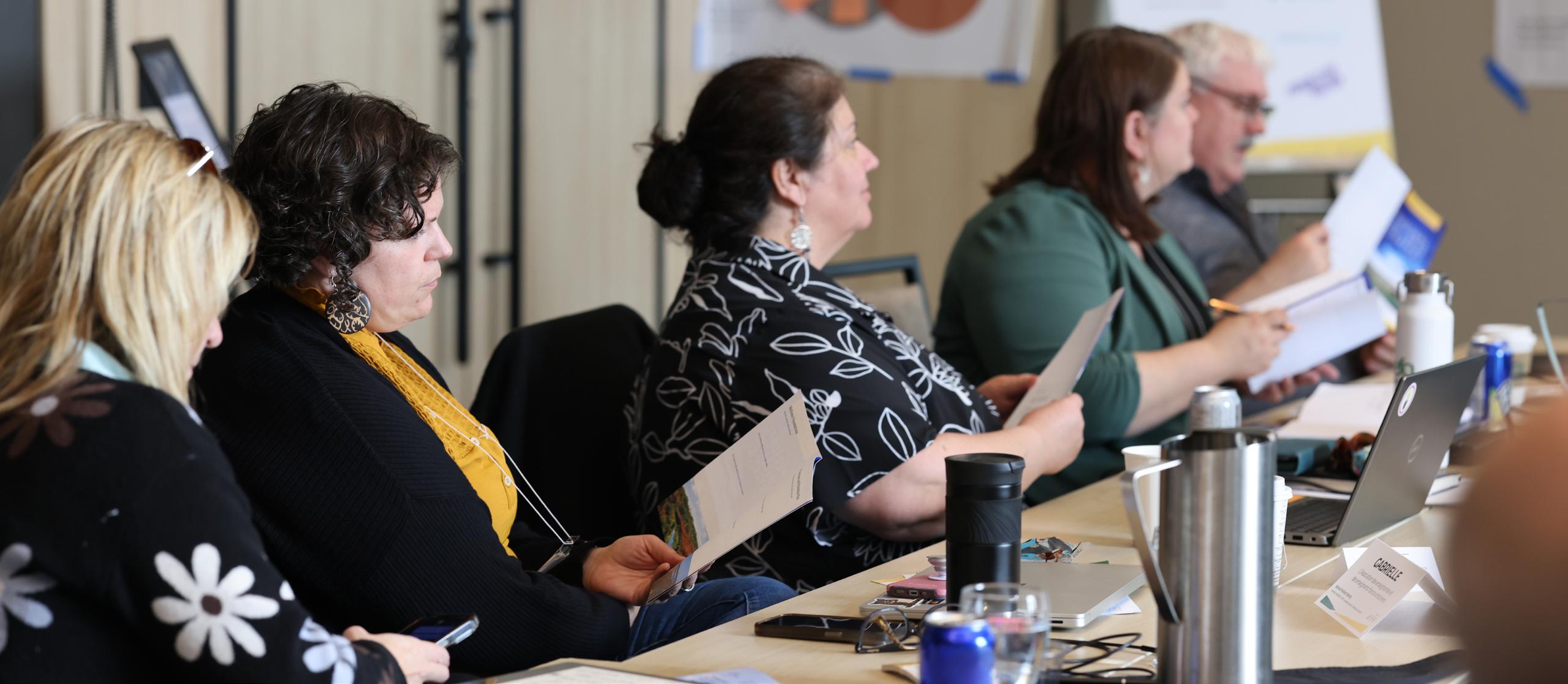
Teacher organization presidents from across Canada met in Whitecap, Saskatchewan on May 25 and 26 to discuss the pressing issues facing public education. The outcome of their discussions was a joint statement, calling on all levels of government to act urgently to support teachers, students and school communities.
Scan here to see the joint statement. www.stf.sk.ca/about stf/news/joint statement education leaders/
The meeting focused on two growing concerns: the ongoing challenges with teacher recruitment and retention, and the rising incidents of violence and aggression in schools. According to the group, the increasingly unsafe and demanding conditions in schools are making it more difficult to attract and keep educators, while also putting the well being of both students and teachers at risk.
The joint statement cites new data from the Canadian Teachers’ Federation’s 2024 Parachute Survey, highlighting the seriousness of the situation:
• Nearly 80 percent of teachers report difficulty managing unpredictable and increasing workloads, and 70 percent identify poor working conditions as a significant factor.
• Ninety five percent of educators observe that staff shortages are negatively affecting students, with the most serious impacts being unmet academic needs and reduced access to specialized supports.
• Fifty five percent of educators report having experienced violence or aggression in the past year.
Despite these alarming numbers, only one in four educators who reported violent incidents said their concerns were addressed appropriately. The survey shows that in school administrators are overwhelmed, safety
protocols aren’t being followed, and support systems aren’t keeping pace with what’s happening in classrooms.
The group’s message is clear: it’s not too late to fix this, but the time to act is now. They’re urging provincial and territorial governments, along with the Council of Ministers of Education, Canada, to take immediate action and partner with teachers on real solutions.
Their priorities include:
• Reducing class sizes to allow for meaningful instruction and student support.
• Increasing numbers of education specialists and support staff in schools.
• Addressing class complexity and ensuring safer learning environments.
• Transparent reporting of violent incidents, including actions taken.
“Together, these priorities reflect what’s urgently needed to create conditions where students and teachers can succeed,” the statement reads. “Access to high quality public education for all students is a cornerstone of Canadian culture and values and contributes to a strong economy and democracy.”
The presidents say that creating safe, supportive environments is essential if Canada wants to preserve a strong public education system. They also emphasize their commitment to working with governments to address the challenges head on.
“Public education is one of the most important investments we can make,” Saskatchewan Teachers’ Federation President Samantha Becotte says. “It shapes our future by giving every student the chance to succeed. We owe it to both students and teachers to get this right.”
Becotte is one of 17 education leaders from across Canada who backed the call to action.

Honouring Saskatchewan’s 2025 Teachers of the Year
BY: ALLIE HEARNDEN, STF COMMUNICATIONS
Each June, as students gear up for summer break, Rawlco Radio turns the spotlight toward the people who helped them get there – their teachers. Through the C95 and Z99 Teacher of the Year awards, Rawlco invites students to recognize the teachers who have made a lasting difference. The nominations are heartfelt, the stories are often emotional, and the recognition is well-deserved.
This year, hundreds of submissions poured in from Saskatoon and Regina, where teachers were eligible for nomination. They told stories of patience, encouragement, humour and genuine care. Students described teachers who helped them feel seen, who made learning fun and who listened and supported them during hard times. These nominations remind us that teaching goes far beyond the curriculum.
From those stories, two teachers were selected: Lorianne Brown of École St. Peter in Saskatoon and Jordan Lynnes of Regina Christian School. Both were completely surprised by the recognition, both are deeply admired by their students, and both show that what students remember most isn’t the lessons, it’s how they were treated.
Lorianne Brown
C95 Teacher of the Year
Lorianne Brown has been teaching for 24 years and currently leads a Grade 7/8 French Immersion class at École St. Peter. Her students describe her as kind, hilarious and supportive, and as someone who knows every student’s name and makes everyone feel like they belong.
That sense of connection was obvious the moment we walked into the school to interview her. As we made our way through the hallway, students smiled and called out, “she’s the best teacher!” It was immediately clear how valued she is, not just by her own students, but by many others who know her by name, even if she’s never taught them.
That level of impact comes from how she shows up. For Brown, it all starts with connection. “If you have a relationship with your students, you can do almost
anything,” she says. “I don’t think you get through to them unless you have a good relationship.”
She didn’t always plan to become a teacher. In fact, she once thought she’d be a nurse. But a presentation at the University of Saskatchewan changed her mind. At the time, she could hardly speak French. “I could write and conjugate verbs, but I couldn’t speak hardly at all,” she laughs. “I almost quit; it was tough.” She stuck with it, and now she’s helping students navigate their own language learning journeys.
One of the moments that stands out most from her career came just weeks before the award was announced. A former student left a handwritten note in her mailbox that said, “you made a difference.” Inside was a message from a now graduated student.
“He wrote that I was the first teacher that didn’t seem like they were just doing a job. He said he looked forward to coming to my class. It made me cry,” Brown says. “You don’t always know the impact you’re having.”
When the C95 team arrived at her school with balloons, cameras and her daughter in tow, she had no idea what was happening. So many weird things had gone on that morning that she thought she was in trouble.
Jordan Lynnes Z99 Teacher of the Year
At Regina Christian School, Jordan Lynnes teaches a little bit of everything: shop, food studies, English, history and psychology. But what he’s best known for is his energy, creativity and the genuine connections he builds with his students.
After 10 years in the classroom, Lynnes still wakes up excited for work. “I don’t ever get worried about Monday coming up. I’m always excited to go to work. I think that it’s just a rejuvenating career,” says Lynnes.
His students clearly recognize that passion. In their nominations, they described him as kind, funny, welcoming and full of talent. That connection is central to how he teaches. Whether a student shows up late or is having an off day, Lynnes meets them with encouragement. “If a student walks in late, I’m just happy they’re here. I just say, ‘I’m really happy you came today. It’s great to see you.’ I try to make them feel welcome.”
One of the most rewarding parts of teaching for him is watching students grow in confidence as they pick up
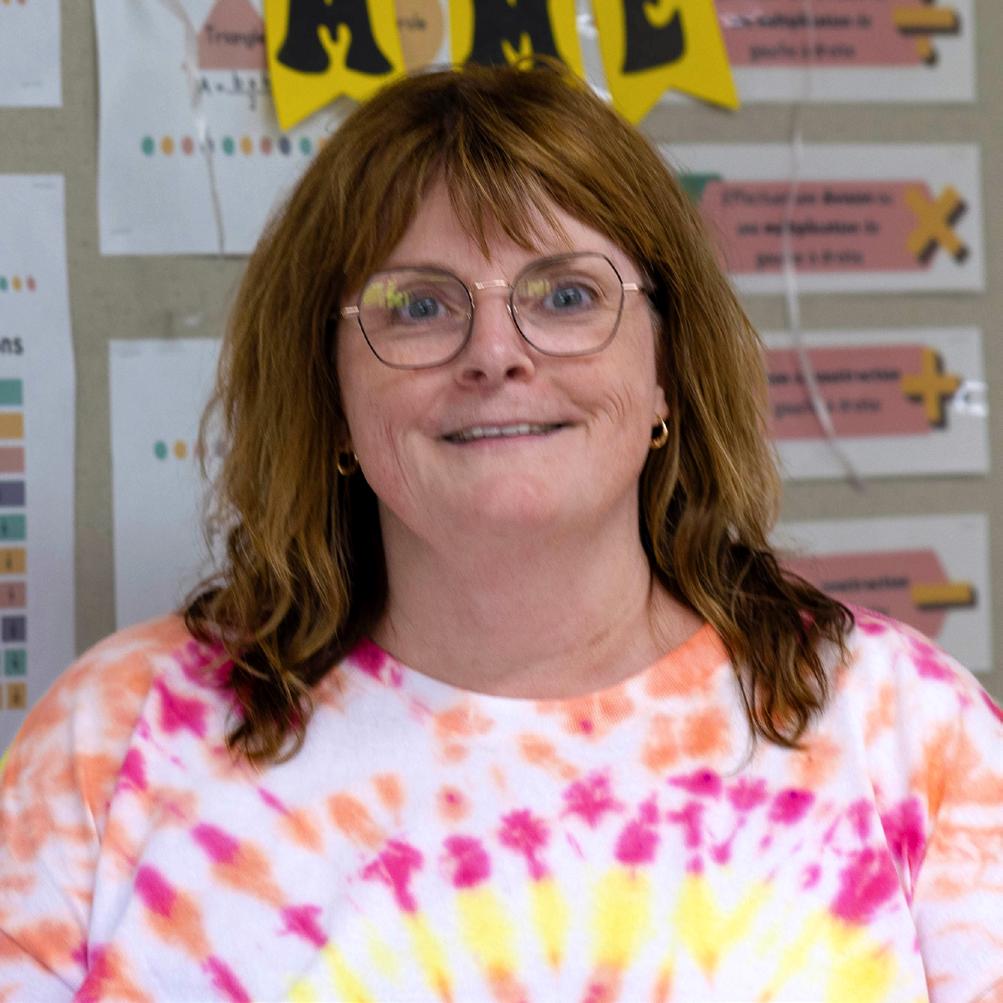

“I was shocked. I almost felt bad because, why me? Why not one of my coworkers? They’re amazing too,” she says.
But for her students, there was no question. Her classroom is a place of laughter, learning and conversations about the importance of helping others. One student simply wrote in their nomination: “she changed my life.”
“We laugh a lot,” she says. “We learn a lot too, but we talk a lot. It’s not just book stuff.”

new skills. In his shop classes, students often start with no experience at all. By the end, they’re building fine furniture, picking up not just technical skills, but also real world confidence and improved literacy along the way. That kind of growth is what keeps him coming back. “I think that’s why I like going to work. It is easy to connect with the kids, and they are so fun,” he says.
When Z99 walked into his classroom with cameras and microphones, Lynnes was completely thrown off. He thought it was a year end prank. “I was absolutely flabbergasted,” he recalls. “It was very shocking. But once I registered what was going on, it was kind of cool. It was pretty exciting.”
Like Brown, he’s quick to downplay the title. “I’ve never seen myself as Teacher of the Year. It kind of feels wrong because a lot of the people I work with are really good people that I think would deserve it over me. But it’s nice that the kids voted and I am both humbled and honoured by their support.”
When asked what he hopes his students remember years from now, he doesn’t hesitate. For Lynnes, teaching goes well beyond the content of his classes. It’s about shaping how students treat others and move through the world. Kindness is something he emphasizes often, especially in a high school environment where social dynamics can be complicated and not everyone feels included.
“I hope they remember to be kind,” he says. “One of the things that I really try to teach them is to be kind to people
who are different than you. Kindness is free. It’s only going to make your day and the other person’s day better. I hope that they remember that going forward into their adult lives.”
Why It Matters
The stories of Brown and Lynnes are different, but the through line is clear: great teachers build relationships. They create space for joy, honesty and growth. They notice the quiet students, challenge the confident ones and meet everyone where they’re at.
Awards like these are more than a nice surprise. They’re a reminder of the lasting impact teachers have, often in ways they don’t realize until years later, when a former student sends a note, shows up for a visit or simply remembers that one moment they felt seen.

Congratulations to Lorianne Brown and Jordan Lynnes and to all the teachers who show up, care deeply and make a difference, even when it doesn’t always feel like it. Your work stays with your students, long after the school year ends.
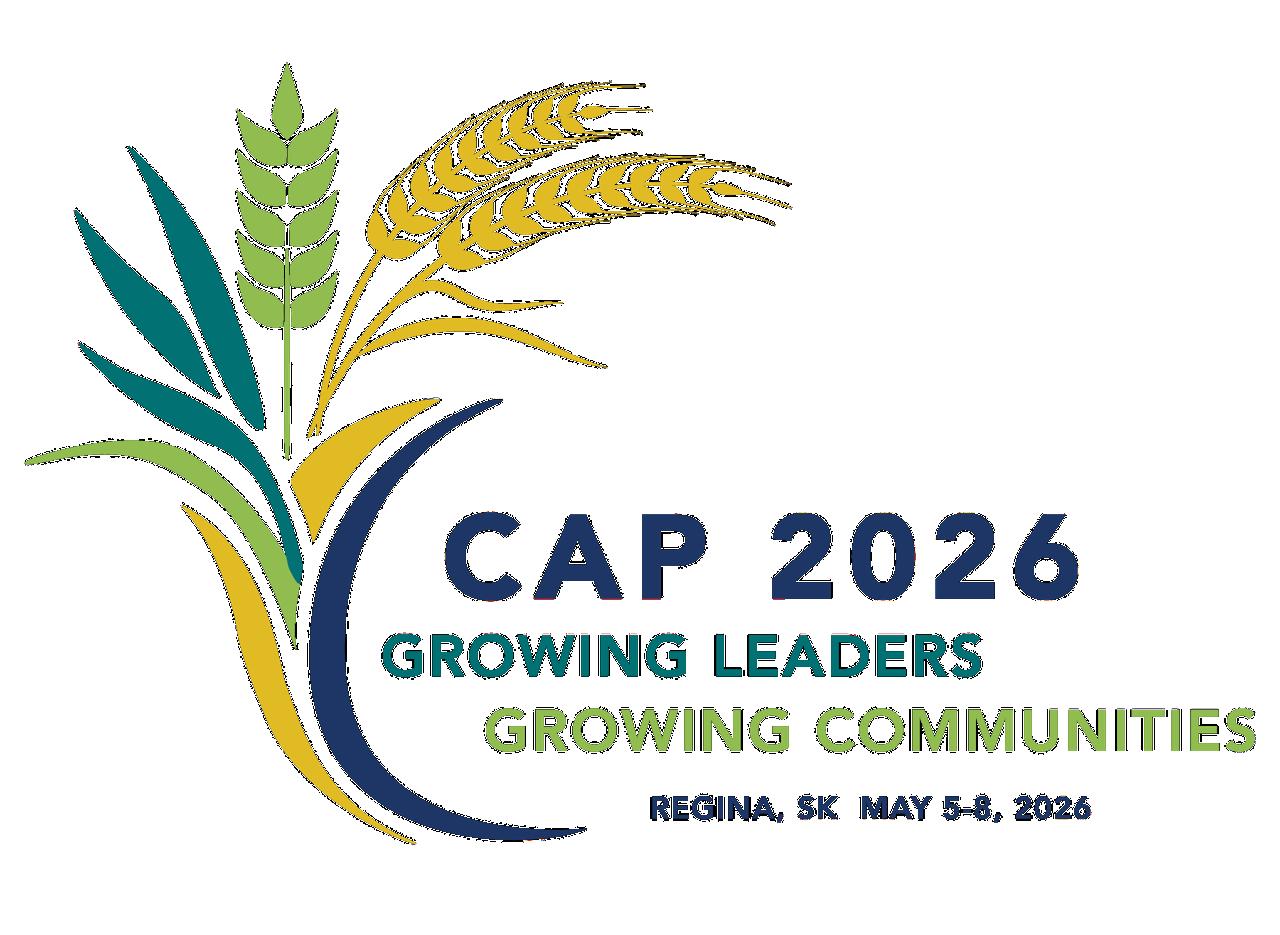
SASKATCHEWAN SCHOOL BASED LEADERS
OCTOBER 27 TH, 2025 TCU Place

9:45am – 3:00pm

OCTOBER 28 th, 2025 REAL District
9:45am – 3:00pm

Want
The McDowell Foundation invites PreK-12 teachers and other educators to submit a letter of intent for the 2026-27 granting year.
Prior research experience is not necessary as the application process is designed to assist prospective researchers in developing meaningful and achievable research projects that support the enhancement of teaching and learning in Saskatchewan.
Notice of Intent Requirements
Applicant(s) name and contact information.
Applicant(s) employer (e.g., school division, university, etc.).
Project Description (100-200 words).
Research experience (e.g., new, novice, or skilled).
Grant Application Process
Notice of Intent Deadline November 28, 2025
Grant Writing Workshop January 2026
First Draft Deadline February 5, 2026
Final Application Deadline April 20, 2026
How to Apply
Email your notice of intent to mcdowell@stf.sk.ca by the November deadline. If you would like to submit orally, please contact the Foundation directly.
More details can be found at: mcdowellfoundation.ca/grants
Contact us at: 2317 Arlington Avenue, Saskatoon, SK S7J 2H8
Phone: 306-373-1660 or 1-800-667-7762
Email: mcdowell@stf.sk.ca
The Saskatchewan Teachers’ Federation Executive is elected from the ranks of councillors to manage and regulate the activities of the Federation. Executive members must ensure the organization acts in accordance with its legislated mandate and fiduciary commitments. Executive responsibilities include the establishment and appointment of members to the benefit plan boards and various committees.
Meet Your Executive

SAMANTHA BECOTTE

Residence: Moosomin
Current School: Principal, Rocanville School
Years as a Teacher: 20
Years as STF
Executive Member: 10
Favourite Grade/ Class to Teach:
Middle Years; Social Studies & PAA
Fun or Personal Fact:
When not at school or attending to Executive work, I love travelling and going on outdoor adventures with my family.
Residence: Northeast of Lloydminster
Current School:
Full time as STF President
Years as a Teacher: 11 years in the classroom plus five years on leave since 2009.
Years as STF Executive Member: 10 completed, going into year 11
Favourite Grade/Class to Teach:
I love math and know it is an area where students struggle. I like seeing students have a breakthrough and see success in the area.
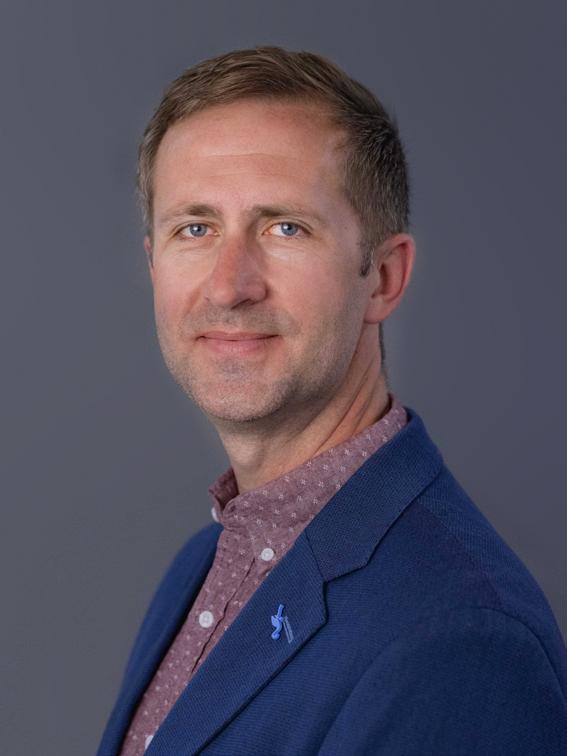
What do you see as the biggest opportunity for the STF?
To continue to grow and diversify in its service to members and to take the momentum of the past couple of years to solidify itself as the trusted voice of public education in Saskatchewan and nationally.
Social Media handle/platform:
@STFPresident on Instagram and Bluesky
Fun or Personal Fact:
We added chickens to our acreage this year. Why is it important to work as a collective?
There is strength as a collective. When we work together toward our common goals, our voices and actions carry more weight. Our efforts are more effective and can lead to better outcomes for teachers and students.
Residence: Luseland
Current School: Luseland
District School
Years as a Teacher: 17
Years as STF Executive Member: Five
Favourite Grade/Class to Teach:
Pre Calculus 30
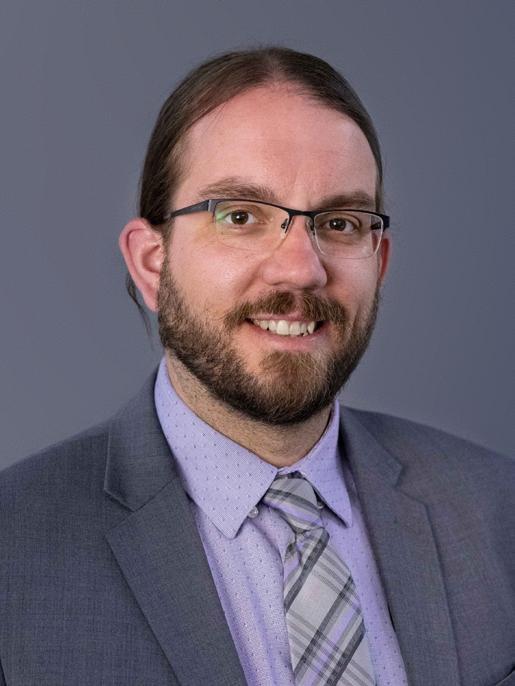
Fun or Personal Fact:
I am an animation afficionado and have approximately 8,000 comic books in my collection.
What do you see as the biggest opportunity for the STF?
To make education better for teachers and students. We all deserve better.


DANIEL DION

CHRIS KAMPMAN

Deshaye Catholic School
Years as a Teacher: 13
Years as STF Executive Member: Two
Favourite Grade/Class to Teach: Middle years. Their sense of curiosity and engagement is awe inspiring.
Fun or Personal Fact:
Towards the end of summer, I begin to miss school.
What is your favourite part about being a teacher?
I am never watching a clock, "a ha" moments never get old, and kids have a way of making us forget (at least temporarily) some of the worldly challenges we find ourselves in in 2025.
Residence: Regina
Current School:
Bureau du CEF (Regina) / École Monseigneur de Laval PSQV
Years as a Teacher: 18
Years as STF Executive Member: 0
Favourite Grade/Class to Teach: Physique 30
Fun or Personal Fact:
I am an amateur radio operator with the call sign VE5DLD and I won a silver medal at the 2002 Canada Wide Science Fair.
Je suis radioamateur avec l’indicatif VE5DLD et j’ai gagné une médaille d’argent à l’Expo-sciences pancanadienne de 2002.
What is your favourite part about being a teacher?
I love getting to know students and sharing my passion for science and technology. Motivating students to become thirsty for knowledge and to become lifelong learners drives me and makes me happy.
J’aime apprendre à connaître les élèves et partager ma passion pour les sciences et la technologie. Ce qui me motive et me rend heureux, c’est d’inciter les élèves à avoir une soif pour le savoir et devenir des apprenants tout au long de leur vie.
Residence: Saskatoon
Current School: Delisle Elementary School
Years as a Teacher: 18
Years as STF Executive Member: Five
Favourite Grade/Class to Teach: Grade 5 and 6. Man, those kids make you laugh every day.
Social Media Handle/Platform: @mskorver on X; @akorv on Instagram
What is one thing members should know about the Federation?

The Emma Stewart Resource Centre is a hidden gem! They have ALL THE BOOKS with little wait time and will mail it to you at no cost! What more could a book nerd ask for?

Residence: Saskatoon
Current School: Aberdeen Composite School
Years as a Teacher: 20
Years as STF Executive Member: Two
Favourite Grade/Class to Teach: I love being a principal!
What is one thing members should know about the Federation?
The Federation exists to serve teachers in all ways. If you are wondering, struggling, planning or celebrating – call for advice on the next steps!


CRYSTAL SCHINDEL

Residence: North Battleford
Current School: Quill Lake School
Years as a Teacher: 13
Years as STF Executive Member: Three
Favourite Grade/Class to Teach: ELA 20
Social Media handle/platform: @livingthedreamandlovingit on Instagram
Fun or Personal Fact: I play defence in hockey but occasionally get called up to play goal.
What is one thing members should know about the Federation?
The Federation is a place of open and transparent dialogue for every member. The STF seeks to understand all aspects of member needs and that can only be done through positive communication. And check out Portaplan … it’s a much better alternative to mortgage insurance!
Residence: Sinclair, MB
Current School: Redvers School
Years as a Teacher: 17
Years as STF Executive Member: Three
Favourite Grade/Class to Teach: Middle Years Arts Ed and High School Visual Art
Fun or Personal Fact: I am an only child. What is your favourite part about being a teacher?
Seeing the creativity and imagination of students!
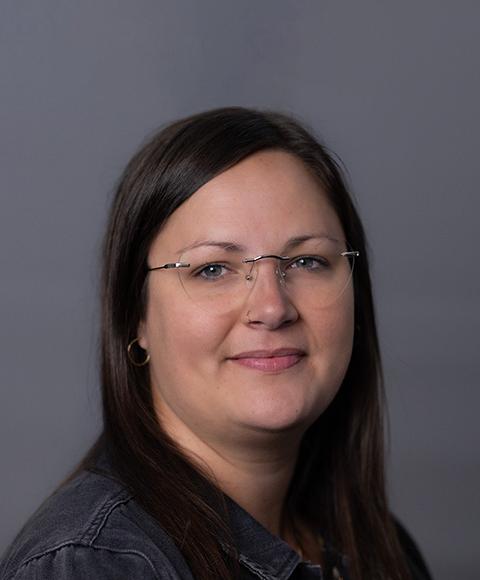
Residence: Regina
Current School: Cupar School
Years as a Teacher: 16
Years an STF Executive Member: Two
Favourite Grade/Class to Teach: Grade 12 ELA and History
Fun or Personal Fact: I was once chased by a bear.
Why is it important to work as a collective?
One voice gets lost in a crowd; hundreds and thousands of voices get heard. We saw the power of our collective voice during bargaining – from letters to phone calls to rallies and social media – we showed that the collective voice and action is one that can make change. We have a strong collective and we need to continue to build it to improve our education system and working
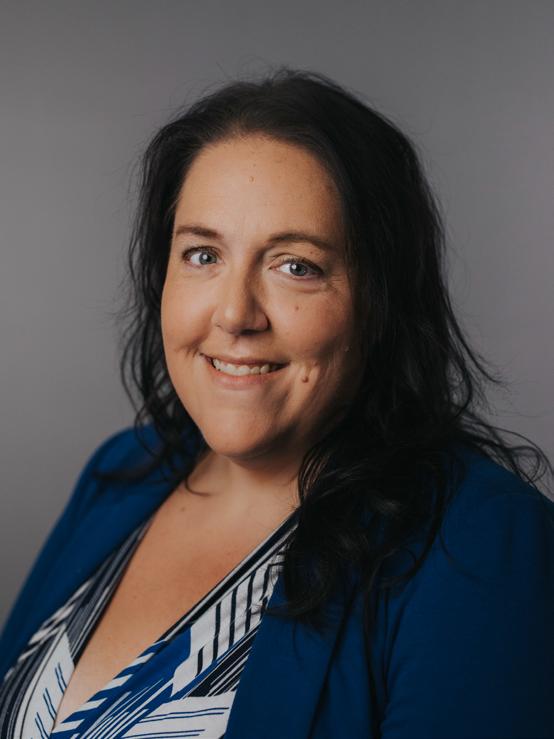
STAY CONNECTED!
Follow us on social media for bargaining updates, advocacy efforts, member spotlights, plus the latest industry news and insights.
We’ve also launched STF Learning , your new destination for professional development, classroom resources and expert-led content.





INCLUSION SASKATCHEW AN PRESENTS
2025 Inclusive Education Awards to
Christy Harrick, Buena Vista School, and Northwest School Division
SUPPLIED BY: INCLUSION SASK
On June 7, 2025, Inclusion Saskatchewan awarded three recipients with 2025 Inclusive Education Awards at the annual Inclusion Conference at the University of Regina.
In partnership with Inclusion Canada, Inclusion Saskatchewan has awarded the 2025 Inclusive Teacher of the Year award to Christy Harrick.
Christy Harrick serves as the student support teacher for Esterhazy High School in Good Spirit School Division. Her work goes far beyond the job description. Christy doesn’t just talk about inclusion – she lives it, she leads it and she inspires others to do the same. Christy can often be found co teaching with the classroom teachers throughout the school, ensuring each of them has the skills and support they need to be able to teach diverse learners within one classroom. She makes sure no student is left behind and that every learner is met with dignity and care. Christy runs a breakfast program entirely with community donations, ensuring no student starts their day hungry. She leads the canteen program with job skills training for students with disabilities, tailored to their dreams and goals – such as getting a popcorn machine just so one student could work towards their goal of getting a job at a movie theatre. She is also the driving force behind several inclusive extracurriculars, such as the mentoring program with Big Brothers Big Sisters, and a new inclusive softball initiative in partnership with the Blue Jays Care Foundation. Her dedication to teaching has already earned national recognition – including the Queen’s Jubilee Medal – but perhaps the most powerful legacy she’s building is right in
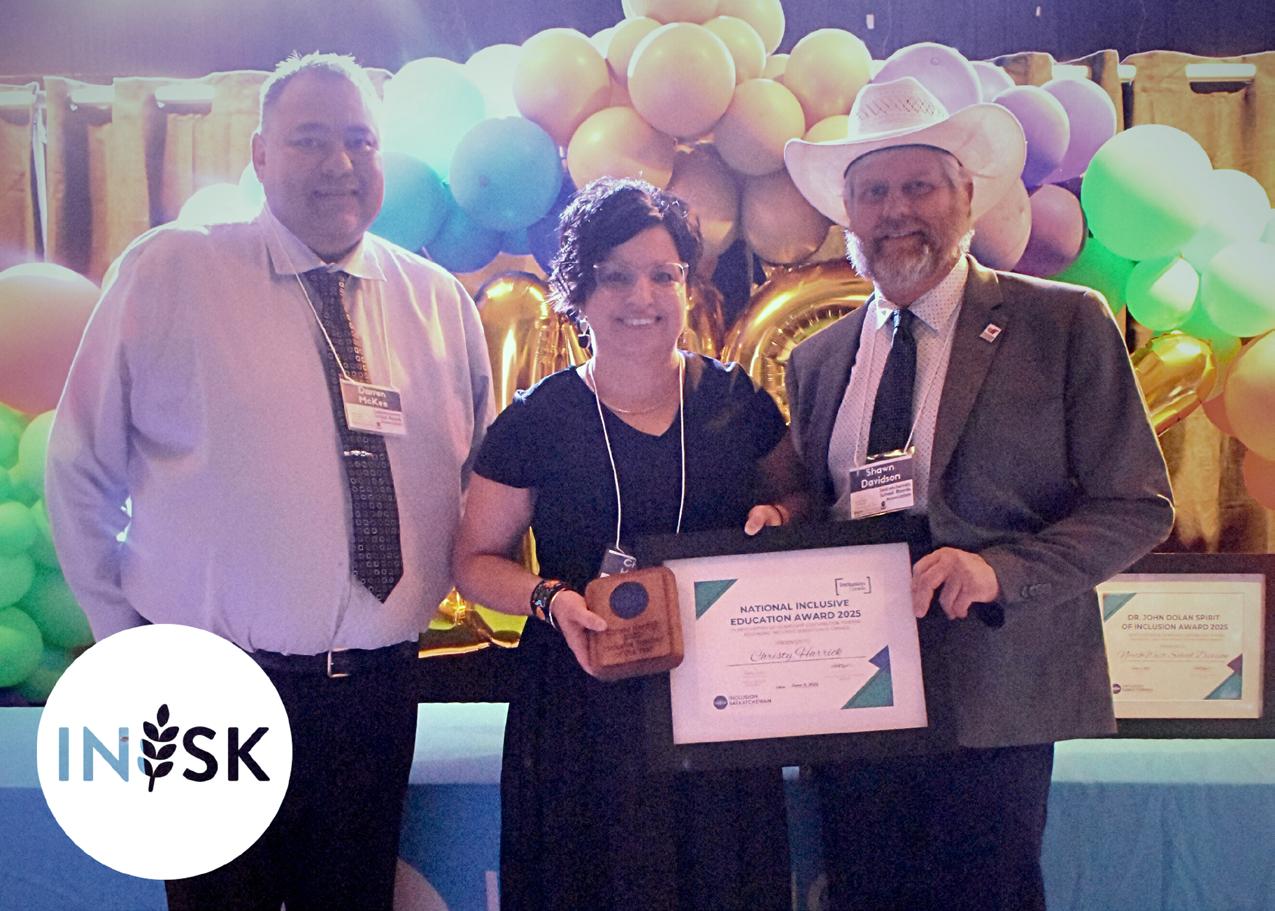
her school community: a place where inclusive education is not a set of strategies, but rather a whole environment. An environment where every student is given a chance to succeed. An environment where every teacher is supported. An environment where equity is not the goal, but is the standard.
In partnership with Inclusion Canada, Inclusion Saskatchewan has awarded the 2025 Inclusive School of the Year award to Buena Vista School.
Buena Vista School of Saskatoon Public Schools is a shining example of what it means to create an environment where every student can thrive, no matter their background or abilities. Buena Vista School has developed an innovative nature based learning program that integrates sensory and experiential learning. This approach makes the core curriculum more accessible and engaging, particularly for neurodivergent students. By embracing the outdoors, the school creates a learning environment that is both inclusive and dynamic. What truly sets Buena Vista apart is the staff’s commitment. Many members of the team self identify as neurodivergent, using their shared experiences to connect with students and foster important conversations about disabilities, equity and inclusion. The school’s partnership with The Carter House: A Family Treatment Centre ensures that children can access treatment in the city.
Inclusion Saskatchewan has awarded the 2025 Dr. John Dolan Spirit of Inclusion Award to Northwest School Division.
Northwest School Division operates 22 schools across 15 communities on the western edge of Saskatchewan, covering from Marsden to Meadow Lake. Within the last few years, the entire division has desegregated all their schools, meaning that students with disabilities are learning alongside peers their own age in regular classrooms where all students are welcomed and supported. At all grade levels, teachers may be found teaching regular, modified and functionally integrated curriculums within one single classroom, ensuring that kids can stay with friends their own age and still learn in the ways that they need. Through partnership with Parents Advocating for Children With Exceptionalities, the division has an inclusion advocate on staff so that all students and families can be supported with a student first approach. The division’s approach to coordination of student supports is incredibly innovative, ensuring that all student support teachers are working with one another across the division, often pairing them together for mentoring relationships and handling complex navigations with a think tank collaborative approach. Just last year, Northwest changed their I CAN Games Day from being an extracurricular sports opportunity just for students with disabilities to being truly inclusive, so all students can now join in on the action.



Inclusion Saskatchewan (INSK) is a provincial charity supporting the inclusion of people with intellectual disabilities and neurodivergence. Through self-advocacy skill-building programs, individual and systemic advocacy, supporting employment and transition to adulthood, and a family network program, INSK works towards their vision wherein all people are valued, supported and included in every aspect of life.
Inside the STF’s First-Ever Labour School
BY: LANCE HILTZ, STF COMMUNICATIONS
This August, the Saskatchewan Teachers’ Federation welcomed teachers to its first-ever Labour School. From August 20 to 22, a group of approximately 50 STF members gathered at the Delta Hotels by Marriott Saskatoon Downtown for three days of learning, conversations and collaboration, with the ultimate goal of building the Federation’s base of highly engaged and informed members in preparation for the next round of provincial collective bargaining in the spring. Since space was limited, STF members were selected to take part in the sessions through an application process last spring.
“I am first and foremost a learner,” says Brienne Seery, teacher and president of the Tri West Teachers’ Association, about what made her want to apply for Labour School.
STF President
“I am a professional learning junkie. I want to learn bargaining strategies and good strategies to engage our members. I became a school staff liaison in 2017 and an STF councillor in 2021. Anything that we can do to strengthen our local associations is excellent, and anything that I can learn about STF governance is always greatly appreciated.”
The initiative was developed to share resources with STF members to help navigate the complex world of labour relations, including local and provincial bargaining, so that teachers know their rights and how to advocate for the proper supports for students.
STF Executive Director

“Labour School is about building capacity among teachers and leaders,” says STF President Samantha Becotte.
“Teachers deal with many complex issues within their
classrooms, and there is a complex world of politics, funding and bi level bargaining that impacts learning and working conditions every day. Labour School helps develop the knowledge and skills needed to be able to support themselves, support their colleagues and strengthen the Federation as a whole.”
The first Labour School agenda was full of informative and inspiring speakers. The event opened with a keynote
and working with current leaders to support members. We’re inviting people to think about what it means to be part of a union, to organize and be involved.”
Banda says there are increasing pressures in the public education sector, and a strong collective that understands their rights, employers’ obligations and bargaining are essential to securing a better public education system for students.
“Labour School is about building capacity among teachers and leaders. ... [It] helps develop the knowledge and skills needed to be able to support themselves, support their colleagues and strengthen the Federation as a whole.”
from Keir Vallance, a labour and employment lawyer who is also an assistant professor at the University of Saskatchewan. Vallance offered insight into the history of unions and collective bargaining. Former STF Executive Director and Manitoba’s current commissioner of teacher professional conduct, Bobbi Taillefer, shared a keynote on member mobilization and the challenges of leadership. Gary Bainbridge, who specializes in labour law, presented a comprehensive scan of the Education Act, 1995 and provincial legislation for teachers. Labour School also included presentations and workshops on organizing and engaging members; education policy and the political landscape; communications and advocacy; an analysis of Saskatchewan’s strong economy and labour market; and employers’ legal responsibilities.
Sessions concluded with an in depth look at provincial bargaining, led by STF Executive Director Angela Banda and Associate Executive Director Patrick Maze.
“Everyone came together with a shared interest in labour relations and the issues that are important to teachers not just across Saskatchewan, but also across the country,” says Maze. “By doing that, we’re recognizing future leaders
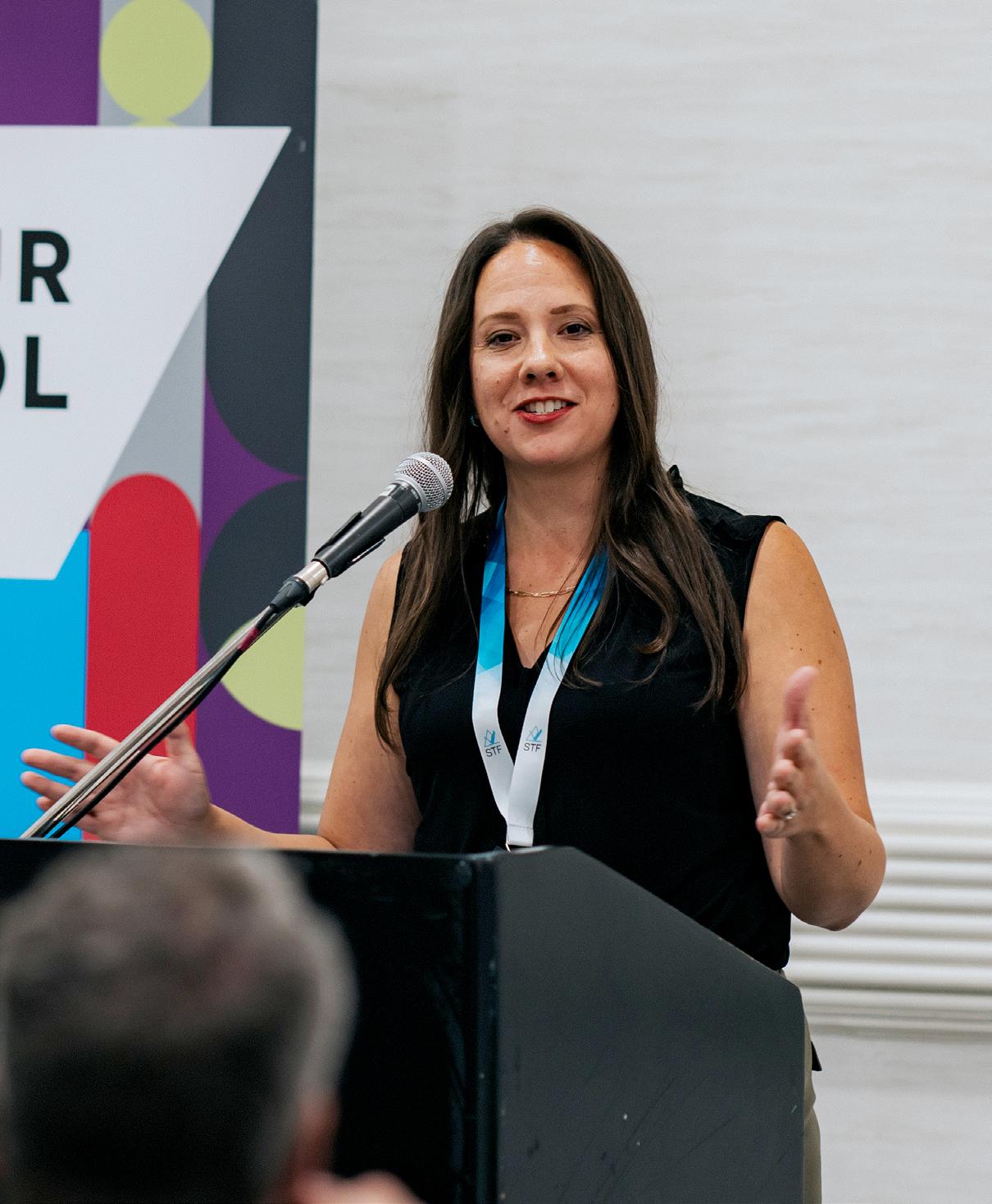
“We need strong voices at every level of our organization,” says Banda. “Labour School equips teachers not only with the skills to be effective advocates, but also with the confidence to stand up for their profession and each other. True solidarity means every member stepping up, speaking out and standing together. It’s about recognizing that every teacher has the power to lead – and ensuring they have the tools to achieve meaningful change, side by side.”
Members who are interested in attending next year’s Labour School are encouraged to connect with their local association president and watch for applications to open next spring.
Promoting Gender Equality in Uganda
BY: SARAH MACDONALD, STF COMMUNICATIONS
Under a hot equatorial sun in a village schoolyard in Uganda, Saskatchewan Teachers’ Federation member Stacy Hill spoke to a crowd of 1,400 secondary students about the importance of educating girls. The students listened to her silently, keen to catch every word about how women can be leaders and how education can change societies and people’s beliefs.
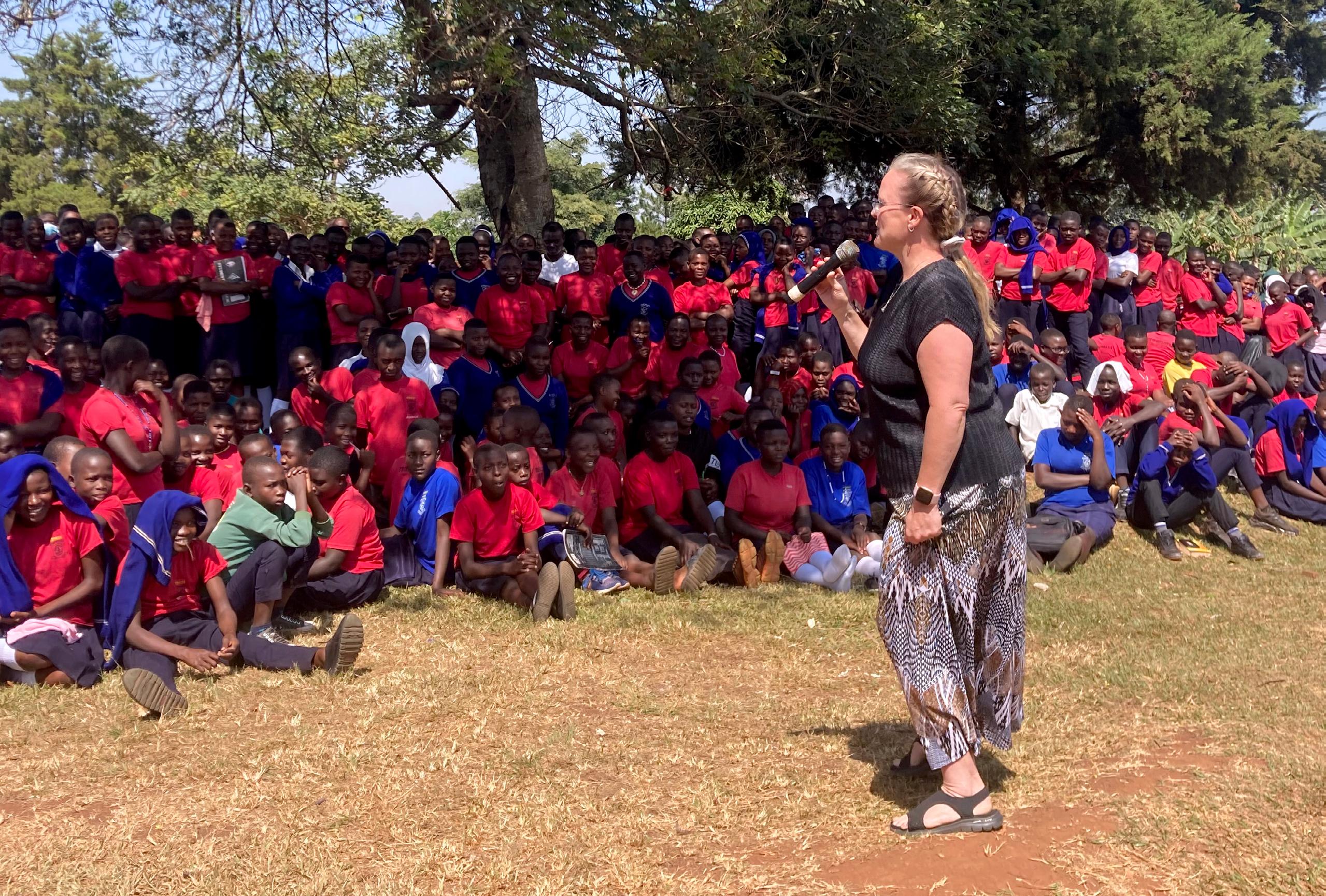
This was one of 12 visits Hill made to schools in western Uganda in July 2024 with the Simameni Project, a Canadian Teachers’ Federation project that aims to improve access, retention and educational opportunities for secondary aged girls in Uganda. As of 2024, only 31 percent of Ugandan women had some level of secondary school education, which is the equivalent of Grades 7 to 12 in Canada. Canadian teachers like Hill and CTF project lead Cheryl Sheffield, with whom Hill was partnered, are hoping their work with the Simameni Project can help girls graduate. They speak to Ugandan youth about empowering female students, giving girls a voice, and promoting equality among the student population.
“We talked to many students during our mentorship sessions, and they all had every intention of finishing secondary school. Many of them came from extreme, extreme poverty. They would wake up at 3:30 or 4 a.m. to do their household chores by 7 a.m. so they could walk to school, but they didn't seem to feel any sense of hopelessness or any sense of injustice. It’s the way it is, and they’re going to get it done. It was so inspiring!” says Hill, principal at Hartley Clark Elementary School in Spiritwood in the Living Sky School Division.
This was Hill’s second opportunity volunteering in Uganda with the CTF. In 2014 she went on a Project Overseas trip in which she taught a literacy course for members of the Uganda National Teachers’ Union (UNATU). Project Overseas, which has since been renamed Teaching Together, is a program for Canadian teachers to collaborate with colleagues in developing countries to improve teaching and learning, and to promote equitable, high quality public education. Back then, she was struck by the noticeable gender inequity in the schools, both among the students and the teachers.
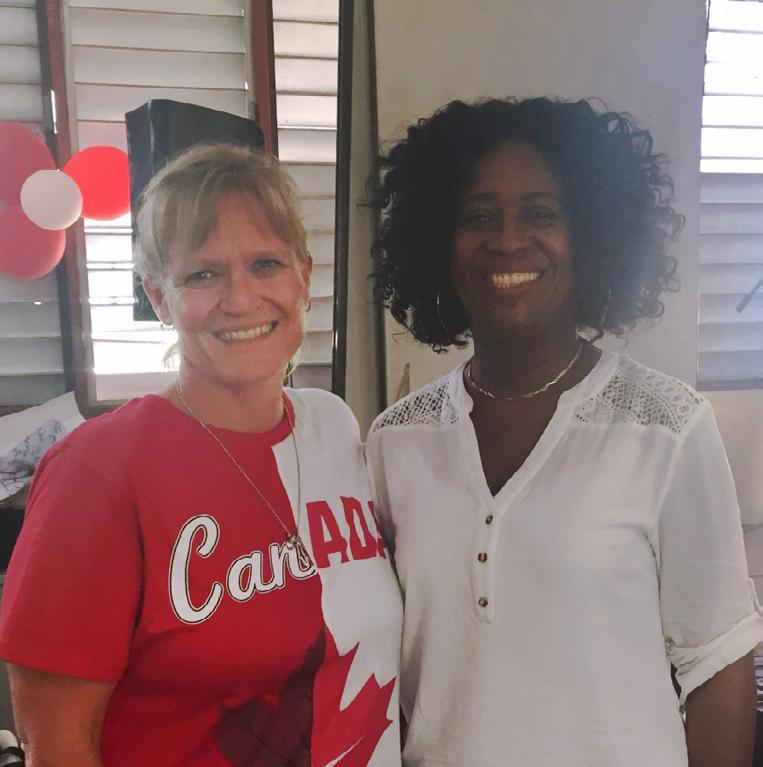

“Once you got to secondary school in 2014, there were hardly any female students at all because of the barriers they faced,” she recalls.
Ugandan girls face many difficulties accessing education. Due to high levels of poverty, many girls drop out of school to work, even as young children. Public schools are free, but students must pay for a uniform and lunch, which can be too costly for some families.
Another obstacle is menstruation. Many girls don’t have access to sanitary products, so their periods prevent them from going to school.
There are also high levels of child marriage. Girls as young as 11 or 12 are married off because their families need the “bride price,” or dowry, that the grooms’ families pay. Once married, they are expected to quit school.
Girls also face sexual violence on the way to school. Many children in rural Uganda have to walk five to 10 kilometres to get to school, often cutting through bushes. “The girls were getting sexually violated by men on the way, becoming pregnant and then they were home with babies by the time they were 12 years old,” Hill explains.
A general belief that girls simply didn’t belong in schools also held many of them back. Hill said in many cases, girls were not being taught as much as boys and were then belittled and verbally abused by teachers for not knowing the same material as the boys. “Then the girls would just say, ‘Okay, fine, I am stupid,’ and they would leave school,” she says.


STACY HILL
When Hill saw a posting about the Simameni Project, she immediately wanted to get involved because she knew firsthand how much it was needed. The Simameni (Swahili for “stand up”) Project, which is funded by Global Affairs Canada, works with 24 public schools across Uganda. Each school has a Simameni Club that works to make their school more inclusive and safer for girls. Some schools have hired more female teachers; some have improved their infrastructure, such as ensuring access to water and better hygiene so that girls can still attend school when they’re menstruating; some have held fundraisers to raise money for uniforms and meals; and some have developed workshops on gender equality.
“They seek the knowledge and have a yearning for education and a willingness to accept any and all teaching so that they can learn a new, better way to do things.”
Upon returning to Uganda, Hill was happy to see some improvements in gender equity. All the Simameni schools had girls in secondary school and there was signage about inclusiveness and how girls can do anything that boys can do. The schools were also having community meetings to promote gender equity.
In addition to speaking to students, Hill and Sheffield also gave professional development workshops to UNATU members on the weekends. Hill notes that the workshops with teachers are different now, too. In 2014, math workshops might not have had a single woman among 100 teachers. “Now they’re being very purposeful to make
sure that they have equal numbers of female teachers and male teachers in the workshops,” Hill says.
They spoke to the teachers about gender equality in the classroom and what would ensure that it wasn’t just boys getting all the opportunities, such as seating arrangements, assigning partners, and other teaching practices that promote gender equality.
Female teachers in Uganda also want to learn about becoming head teachers, as principals are called there. They are very curious to know how Hill, who was a vice principal for three years and has been a principal for four, became a principal. Hill told them that female teachers in Canada had already fought for equality and done the hard work that Ugandans are doing now.
She also shared her own approach to leadership, which includes her own vision for a school and blending it with that of the community. “To be a leader, you have to inspire. You don't just make everything the way you want it and push your values and beliefs onto the school, but you collect the community’s values and beliefs,” Hill says.
The Canadian Teachers’ Federation has international opportunities available to STF members. They include the Simameni Project and the Teaching Together program, where Canadian teachers collaborate with colleagues in Africa and the Caribbean to improve teaching and learning. Learn more at www.ctf fce.ca/what we do/international development cooperation/.

In February 2025, Hill returned to Uganda a third time to visit the 12 Simameni schools in Eastern Uganda and do more teacher workshops. While she was there, the Simameni Project held a ceremony to donate a new sewing machine to each of the 24 schools. Among other things, the sewing machines would be used to make reusable sanitary pads and skirts so that girls would no longer be prevented from attending school because of their periods. The ceremony was attended by the media, local dignitaries, representatives of UNATU and the schools’ head teachers.
“Many of the head teachers were teary eyed, saying what an incredible change and difference that would make for their schools. That was amazing!” she recalls.
Hill says there is a strong desire for change in Uganda, so women and girls in Uganda are working hard for equal opportunities in education, whether that is going to secondary school, becoming math or science teachers, or striving to be head teachers. She has no doubt that these changes will continue.
“They seek the knowledge and have a yearning for education and a willingness to accept any and all teaching so that they can learn a new, better way to do things,” she says.
While the Ugandans learned much about gender equity from Hill, she also learned a lot from them. She says they are incredibly welcoming and generous, even when they
have so little to give. Their dedication to education is inspiring; some teachers travel four or five hours to attend the workshops, giving up their entire weekends to be there. Others told her that they taught even when they weren’t being paid.
“The Ugandans taught me about dedication to your career. They taught me about bringing community together to work on something that they feel passionately about. The school had motivated the whole community to work on their goal. And of course, we learned about gratefulness in a big way,” she says.
Hill’s trips to Uganda to exchange ideas with teachers and students will always have a special place in her heart, as she finds the people there to be like family. But never one to turn down a new opportunity to find connections with teachers in other parts of the world, Hill spent part of this past summer leading a Teaching Together trip in Ghana (an adventure that hadn’t yet happened at the time this article was written). Hill also went to the Caribbean nation of Grenada in 2018 with Teaching Together. She encourages all STF members to consider participating in international opportunities.

“It’s a professional development like none you’ll ever do again because you’re learning things that you can’t learn in our culture, such as about hopelessness, collegiality and perseverance. It’ll change you in a way you can’t be changed here in Canada,” Hill says.



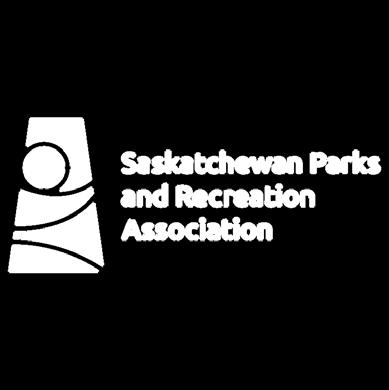



STF Website Renewal: How We’re Building Your Future Website
BY AARON STUCKEL, STF COMMUNICATIONS
You’ve told us what you need. Now we’re building it.
The STF website is getting fully rebuilt, and thanks to nearly 3,000 members who took part in our surveys, focus groups and testing sessions, this new site is being shaped directly by your experience.
WHAT WE’VE DONE SO FAR
We spent nine months in 2024 deep in user research to better understand where our current website falls short and how we can serve you better. That work included:
• Usability testing
• Member focus groups
• Member surveys
Your feedback gave us a clear direction – and some valuable insight into how members use our site.
WHAT WE LEARNED
Members told us:
• The website is an essential part of the STF experience.
Over 60 percent of members said their digital experience affects their satisfaction with the STF.
• Search and navigation need fixing.
On average, members have just four to six minutes to complete a task on our website. That time should be spent getting things done, not searching for the right link or PDF.
• Mobile matters.
With 75 percent of all visits coming from mobile devices, a mobile friendly experience is no longer optional – it’s essential.
• You want more personalization and self-serve tools. Whether it’s finding relevant professional development or accessing benefit information quickly, members want a site that adapts to their needs.
WHAT’S HAPPENING NOW
Since completing the research phase, we’ve been working internally to plan how we’ll solve these issues in a sustainable, long term way. This isn’t just a redesign – it’s a rethinking.
That includes reviewing the policies, processes and workflows that support our website behind the scenes. We’re looking at how content gets created, approved and updated, so the site stays accurate and easy to use over time – not just on day one.
WHAT YOU CAN EXPECT
We’re still early in the build process, but here’s a preview of what’s coming:
• Navigation that makes sense to you
• Search that just works
• Improved self service options
• A site focused on helping you accomplish tasks – whether it’s finding the latest bargaining updates or registering for professional development, the site will be more focused on meeting your needs.
MORE TO COME
We’re excited to move into the next phase of the project: building the site you’ve helped shape. We’ll keep you updated as things progress – and we look forward to showing you what’s next.


